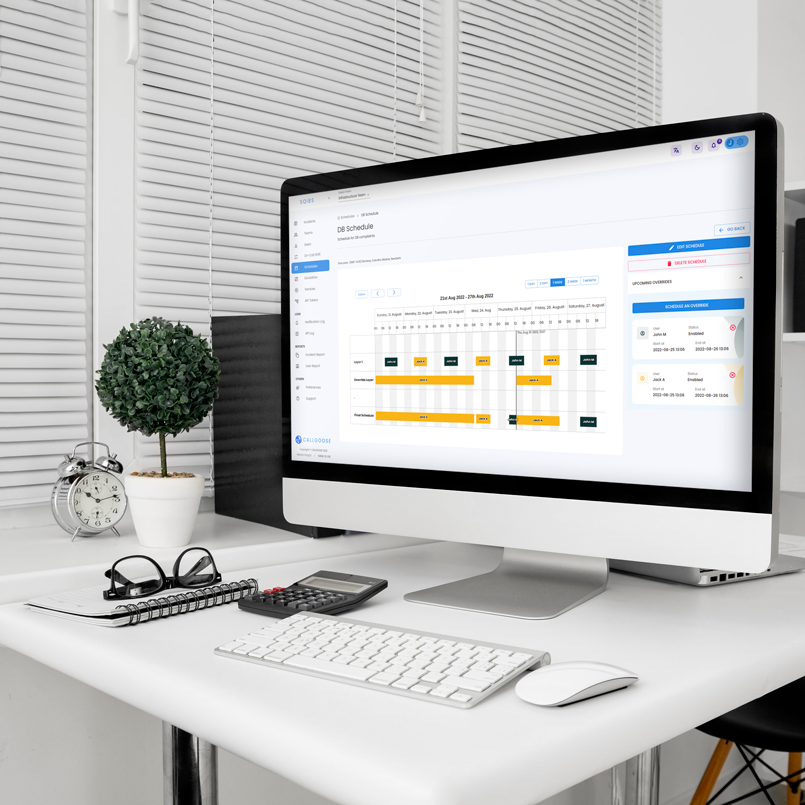Getting Started
Special
SINGLE SIGN-ON
Teams
Users
Escalation Policies
Service
Incident
Request
On-Call Shift
Schedules
Schedule Override
Logs
API
Webhook
Apps Integration
Reports
Preference
Profile
Automation
Self-Service Portal
FAQ
Automation Git
You can use Git for both Action and Profile configurations. By utilizing Git, you can efficiently manage, version, and track changes for both types of configurations. Whether you're setting up actions or defining profiles, Git ensures that all related files and configurations are organized in a centralized repository, allowing for seamless collaboration, updates, and execution of processes. This flexibility makes it easy to handle complex workflows while keeping everything well-structured and easily accessible.
Authentication types
Authentication types in Git determine how users securely access repositories. There are 3 types of authentication supported by Callgoose SQIBS.
1. Token
An authentication token is a secure way to access Git repositories without using a password. It’s a special code that proves your identity and allows you to interact with the repository. To set up token authentication, check with your Git server provider for instructions on how to create and manage tokens.
2. SSH
SSH authentication allows you to securely access Git repositories using a key pair (public and private keys) instead of a password. To set up SSH authentication, follow the instructions provided by your Git server provider to generate and configure your SSH keys.
Based on where you run, you need to handle the SSH keys correctly:
i. Using Callgoose runner JAR on your side:
Make sure to have the ".ssh" directory under your home directory, and it must contain the necessary config file and SSH keys. The config file should include the required configurations to access the Git server without any issues.
config file example: Host * StrictHostKeyChecking no ConnectTimeout=10
• ID_RSA(id_rsa)
• ID_DSA(id_dsa)
• ID_ECDSA(id_ecdsa)
• ID_ED25519(id_ed25519)
ii. Using Callgoose OOBI Automation platform:
Ensure that you add the SSH key displayed in the Automation Profile tab to your Git server for seamless access.
3. Basic
Basic authentication involves using a username and password to access Git repositories. While it is a simple and widely supported method, it is generally not recommended due to security concerns.
Git URL
The Git URL is the address used to access the Git repository.
i. For SSH authentication: You need to enter the repository URL in the correct SSH format by prefixing it with ssh://. For example, instead of git@gitprovider.com:user/repo.git, use ssh://git@gitprovider.com/user/repo.git.
ii. For Token and Basic authentication: Use the https:// or http:// URL format to access the repository.
Git Entry File
For Actions: Ensure that all the Action files are placed inside a folder, and the Git Entry File is also placed in the same folder. Each Action has its own specific configuration within the entry file.
Go here to view the configuration details for each Action type entry file.
For Profiles: Similarly, ensure that all the Profile files are placed inside a separate folder, with the Git Entry File stored in the same folder. Each Profile has its own configuration within the entry file.
Go here to view the configuration details for each Profile type entry file.
You can rename the "Git Entry File" to any name of your choice. For example: cg_entry_file_profile_python.yaml, cg_entry_file_action_python.yaml etc. Choose a name that allows for easy identification.
Enter the full path starting from the root of the Git repository. For example, if the file is located in: action -> bash -> check_disk_space -> cg_entry_file.yaml, the path should be written as action/bash/check_disk_space/cg_entry_file.yaml. Always ensure the path is accurate to avoid issues accessing the file.
You can download the Git Entry File for the selected type by clicking the Download button. Once downloaded, fill in the necessary information and place the file in the Git repository along with the other related files. Ensure that the file is correctly formatted and stored in the appropriate directory for proper execution.
Git Branch
The Git branch specifies the branch where the files are stored in the repository. If you leave this field empty, the default branch (usually main or master) will be used automatically. Ensure to specify the branch if the files are located in a non-default branch.
Example Configuration
The following example is an Action configured in Git.
Git Authorization Type: Token
Git URL: https://gitprovider.com/organisation/automation.git
Git Entry File: action/bash/check_disk_space/cg_entry_file.yaml
Git Branch: main
By following these steps, you can effectively configure and execute Git based Automation in Callgoose SQIBS automation platform. This capability enhances the automation of system administration tasks and simplifies workflow management.

